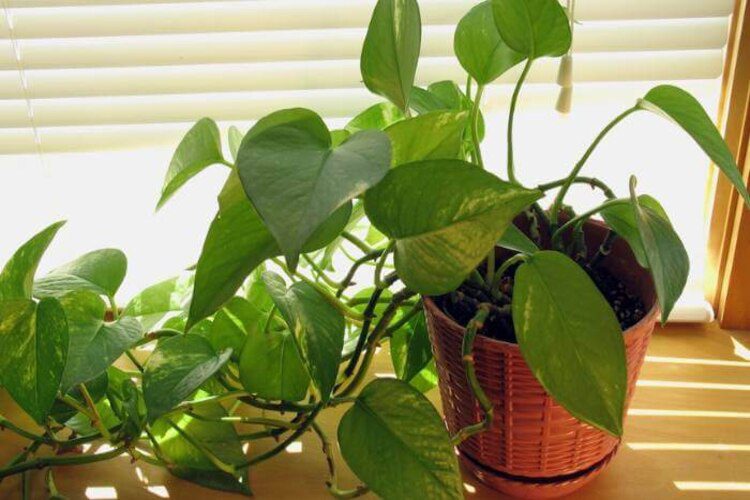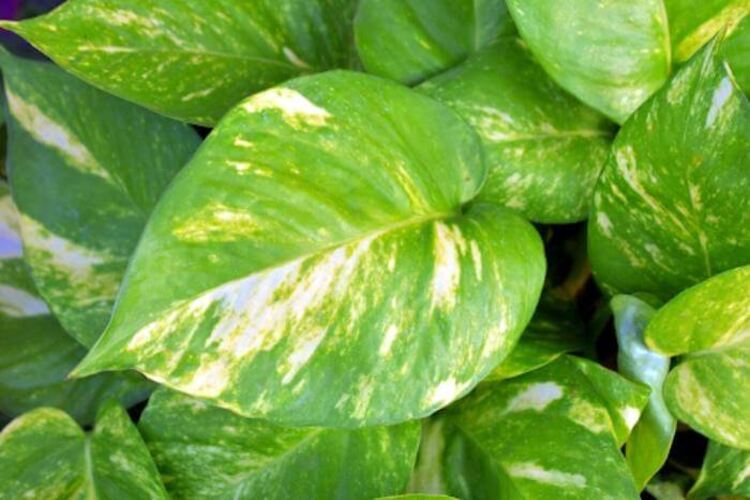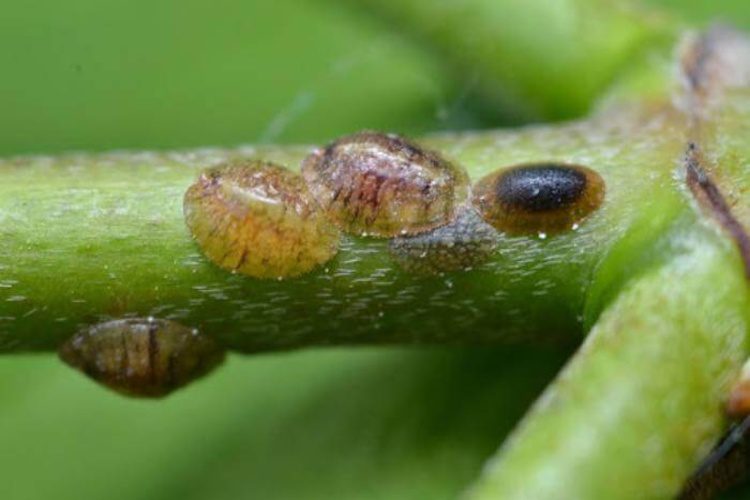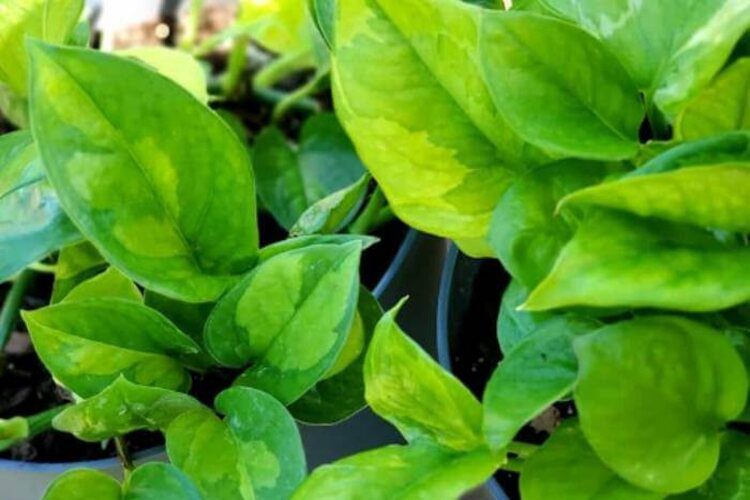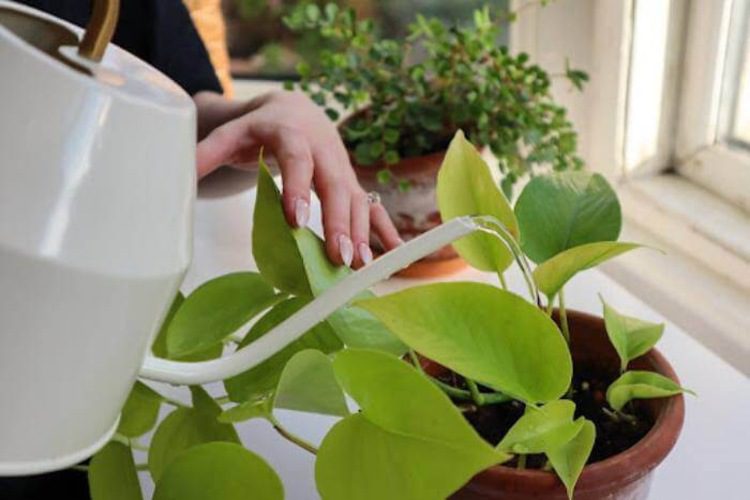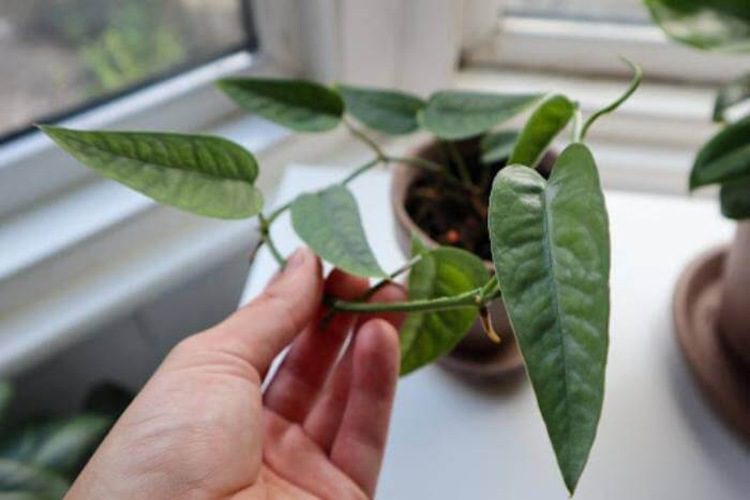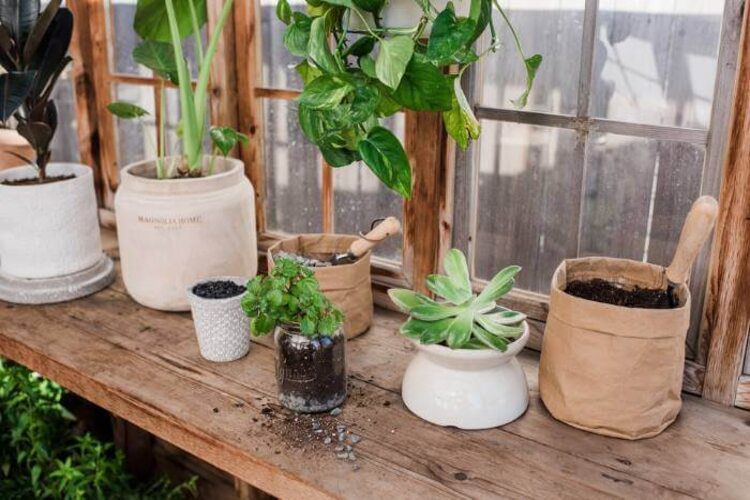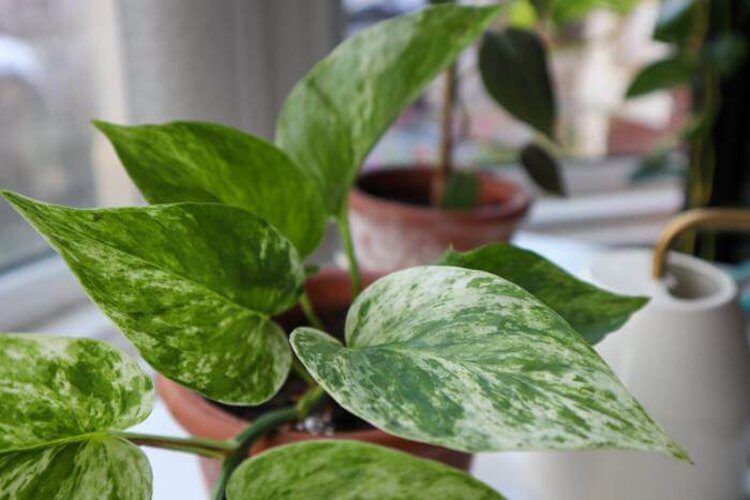Cebu Blue Pothos Care: Guide To Blue Shade Plant
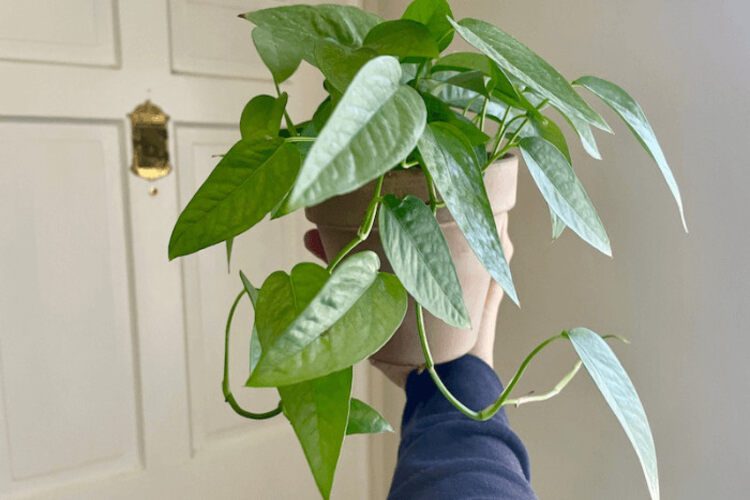
The Cebu Blue Pothos is a popular indoor plant that is known for its silvery green-blue color. This plant is easy to care for, but there are a few things you should keep in mind if you want it to thrive.
In this blog post, you will learn about the care and maintenance of Cebu Blue. You will learn how to water and fertilize the plant, as well as how to provide it with the right amount of sunlight.
| Scientific Name | Epipremnum pinnatum ‘Cebu Blue’ |
| Common Name | Cebu blue pothos, blue pothos |
| Family | Araceae |
| Origin | Epipremnum pinnatum ‘Cebu Blue |
| Plant Type | Evergreen, vine |
| Bloom Time | occurs only in the mature phase |
| Flower Color | erect flower with a cream spathe marked with purple surrounding the spadix |
| Soil | Moist but well-drained |
| Water | Allow the top two inches of soil to dry out before watering |
| Temperature | 60°F–80°F (15°C–27°C) |
| Sunlight | Bright, indirect sunlight |
| Toxicity | Toxic to humans, cats and dogs |
About Cebu Blue Pothos
The Cebu Blue Pothos is a beautiful, trailing vine that can be used to decorate your home or office. It has dark green leaves with a bluish hue and grows best in indirect light. Compared to Baltic Blue Pothos, it is slightly easier to care for and can tolerate a wider range of conditions. It thrives in moist soil but can also adapt to dryer conditions if necessary. This Pothos plant does well in both indoor and outdoor settings, making it the perfect choice for any climate. If you are looking for a beautiful, low-maintenance plant that will add some color to your décor, this Pothos is a perfect choice!
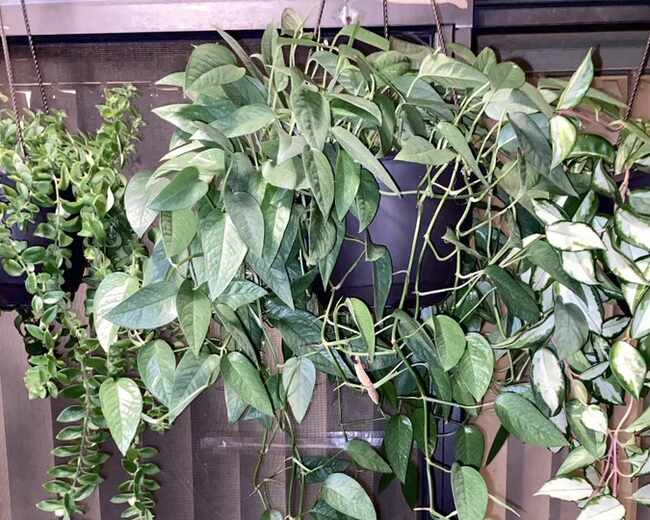
Cebu Blue Care
You need to take care of these factors to keep Cebu Blue healthy:
Light
Cebu Blue Pothos do best when they receive bright, indirect light. They can tolerate low light levels but will not grow as quickly or have as many leaves if they are not given enough light. If your plant begins to stretch and grow long vines, it is likely because it needs more light. Move it closer to a window or add some artificial lighting.
Soil
This plant prefers moist but well-drained soil. You can either use a potting mix specifically for houseplants or make your own by combining one part peat moss with two parts perlite or vermiculite. Be sure to water the plant regularly and allow the soil to dry out slightly between waterings.
Watering
These types of Pothos plants should be watered regularly, keeping the soil moist but not soggy. These plants are sensitive to fluoride and other chemicals often found in tap water, so it is best to use filtered or distilled water. Allow the top inch of soil to dry out between waterings.
Fertilizer
Fertilize your pothos plant every month in the growing season with a balanced liquid fertilizer diluted to half strength. Be sure to follow the directions on the fertilizer package and never over-fertilize your plant, as this can damage the roots and leaves.
Temperature
Cebu Blue does best in temperatures between 60°F and 80°F (15°C and 27°C). They can tolerate higher or lower temperatures for short periods, but prolonged exposure to extreme temperatures will damage the leaves.
Humidity
This little climbing vine prefers humid conditions but can tolerate dry air. Ideal humidity is around 40–60%. If the air in your home is particularly dry, you can increase the humidity around your plant by placing it on a pebble tray or using a humidifier.
Repotting
Cebu Blue Pothos plants should be repotted every two years or so. If your plant has a healthy appearance and is not leaking roots through the drainage hole, then you can wait to repot. If you notice roots coming out of the hole on the bottom side, then it’s time to repot your plant. It has gotten too big for its pot.
Always go up a pot size when repotting, and make sure there’s proper drainage at the bottom of your container so excess water doesn’t pool around its roots. It’s always best to wait until warmer months, like spring and summer, before you repot your Cebu Blue.
Read more: Global Green Pothos Care: Best Guide For Beginners
Cebu Pothos Propagation
Propagation is used to generate more of these plants from the old ones; it is also the solution when you’re looking for indoor plants to gift to friends or fellow lovers on a budget.
Propagate in water
Step 1: With the help of some pruning shears or scissors, you can cut off branches from your plant. Make sure there are at least 5 leaves on each stem cutting.
Step 2: Remove the lower 2-3 leaves from your cuttings. Along their length, you will find nodes representing where roots should eventually emerge after being planted in water with care.
Step 3: Place the stem cuttings in the water and submerge them completely, with only leaves above for air circulation.
Step 4: Make sure the water is changed every week. The roots should start to grow within 2–3 weeks.
Step 5: Fill a pot with a well-draining and moistened potting mix. Make sure the roots are at least 1 to 2 inches long before you transfer them into their new home.
Step 6: To get the most from your cutting, put it in a location with bright but indirect light and keep the soil evenly moist for 1-2 weeks before returning regularly.
Propagate in sphagnum moss
Step 1: Before you start, you’ll need a bowl of water to soak the sphagnum moss. Soak it for 10–15 minutes. Moss is the perfect plant for bogs, as it can hold onto its natural moisture and continue taking up space until there’s no room left.
Step 2: While waiting for the moss to be soaked, cut the leaves off with pruning shears or scissors. Make sure there are at least 6 on each stem.
Step 3: Remove the lower 2 or 3 leaves from an intact stem and expose the nodes along it.
Step 4: Squeeze the water from your sphagnum moss and put it in a small pot or container. The clear plastic ones are perfect for this.
Step 5: Put the cutting in sphagnum moss, and make sure that you cover up any exposed nodes with moss while leaving enough space for air circulation. To keep the humidity high and ensure that your moss stays healthy, cover it with a plastic resealable bag. Make sure you leave some room for leaves.
Step 6: Within 2 to 3 weeks of misting the moss every week, roots should begin forming. Resist checking in on them too early, as this may damage their delicate structures.
Step 7: When the roots have grown at least 1 to 2 inches long, It is time to transfer your new plants from their sphagnum moss home into the soil. Be very gentle when removing the cutting because the roots of your tree are delicate, and any moss that gets stuck should be left alone and mixed with new soil.
Step 8: Make sure to give your newly rooted cutting some bright, but not too harsh, light. Keep the soil evenly moist for one week after planting, then resume regular watering schedules with them as they acclimatise themselves.
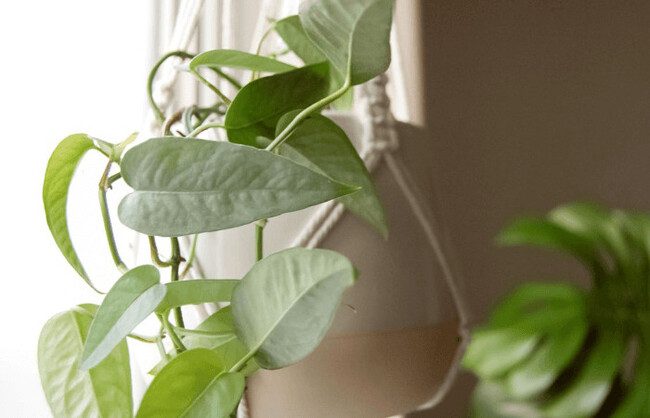
Toxicity
The Cebu Blue Pothos is a member of Epipremnum pinnatum (including Glacier and Global Green, etc.), which is a beautiful plant commonly found in households. However, many people don’t know that this plant is highly toxic and can cause serious health problems if ingested. The plant contains insoluble calcium oxalate crystals, which can cause burning and irritation to the mouth, throat, and stomach.
In severe cases, ingestion of the plant can lead to difficulty breathing, swelling of the throat, and vomiting. If you suspect that your child and pets have ingested the Cebu Blue Pothos, it is important to seek medical attention immediately.
Common Problems
Some problems can arise with this plant. Some of these include leaves turning yellow and not growing. However, we will discuss how you address each issue below:
Yellow Leaves
Like its relatives, Baltic Blue, the leaves on your Cebu Blue will start to yellow and droop if they’re not getting enough water or light. Along with the yellowness of its color, you may notice that your leaf becomes noticeably flattered as well. The plant isn’t getting enough nutrients from light and/or water. To get rid of these bad leaves, make sure your plant is getting enough water and bright indirect light.
Not Growing
Light and water are very important. In addition to causing yellow leaves, it is also the cause of the plant not growing. Move your plant to a brighter location and see if that helps. Check your plant’s soil and ensure it is moist but not soggy. If the soil is too dry, give your plant a good watering.
Another reason is that your plant is not getting enough nutrients. Pothos plants need to be fed every few weeks with a balanced fertilizer. If your plant looks unhealthy, it may be due to a nutrient deficiency. Try feeding it with a good-quality fertilizer and see if that helps. You should also look for any signs of a pest infestation. These harmful insects slowly drain nutrients from the plant over time, so it’s important not to miss them.
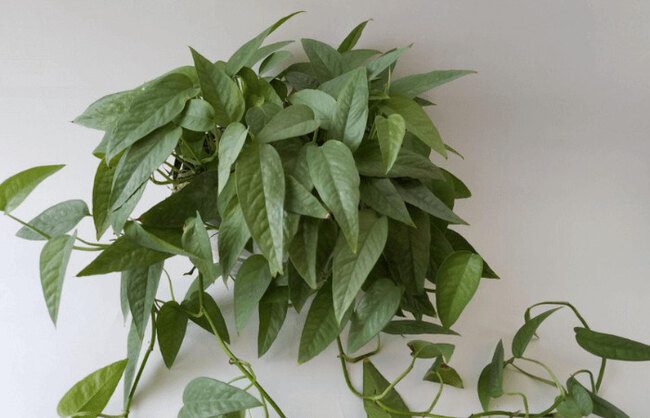
Care Tips
Here are some tips for growing Cebu Blue Pothos successfully.
Choose the right pot
Make sure to choose a pot with a drainage hole at the bottom so that excess water can escape. The pot should also be large enough to give the plant plenty of room to grow.
Use a good potting mix
A high-quality soil mix, either handmade or bought from a local garden, will help keep the soil moist but not wet, and it will also provide the nutrients that the plant needs to thrive.
Place your plant in indirect sunlight
Cebu Blue Pothos does best when it receives bright, indirect sunlight. If you don’t have a spot near a window that gets lots of natural light, consider using a grow light instead.
Keep the soil moist
Cebu Blue Pothos likes moist but not wet soil, so make sure to water regularly (but not too much!). If the leaves start to droop, that’s a sign that the plant needs more water.
Fertilize regularly
Cebu Blue Pothos benefits from regular fertilization. Use a balanced fertilizer every two weeks during the growing season (spring and summer), and then reduce it to once a month during the fall and winter. With these tips, you should be able to grow a healthy and beautiful Cebu Blue Pothos plant of your own!
Conclusion
The Cebu Blue Pothos is a beautiful, easy-to-care-for vine that won’t demand much of your time. It has surprisingly simple requirements.
We hope this information has helped you troubleshoot any problems you may be having with your Cebu Blue Pothos. Remember, leaves turning yellow and stunted growth are common problems with this plant, but they can be easily solved by identifying the cause and taking corrective action.
FAQs


